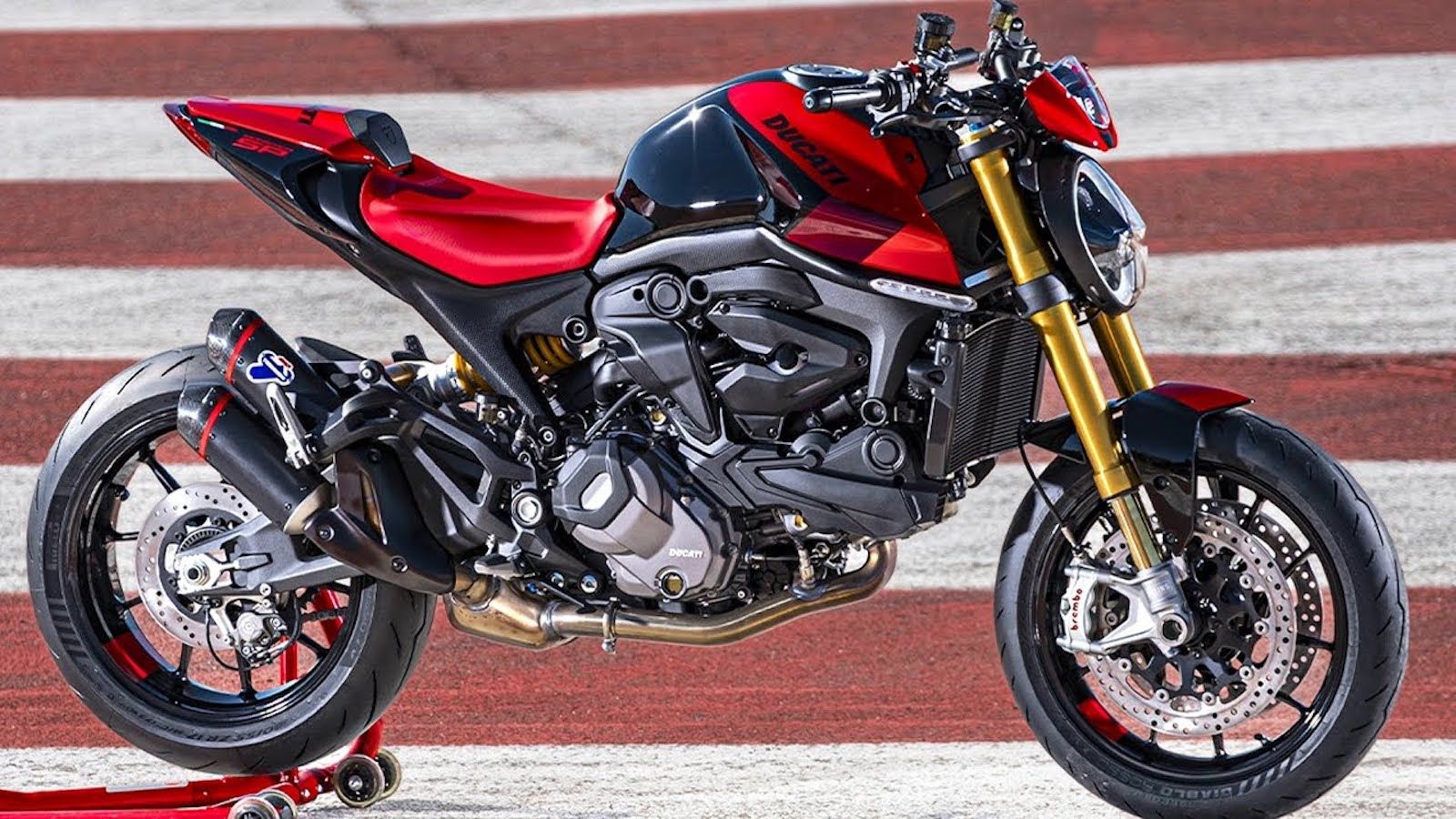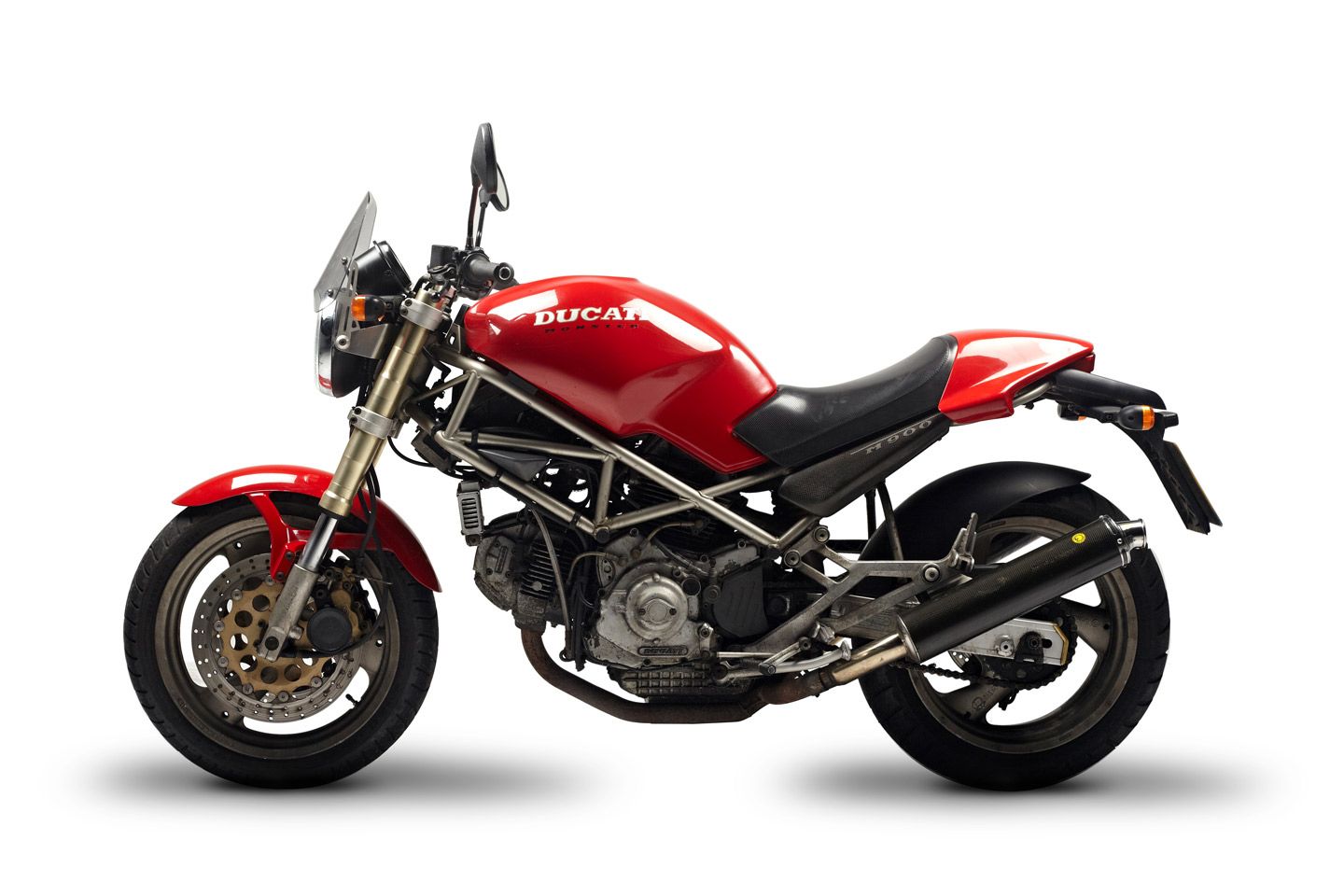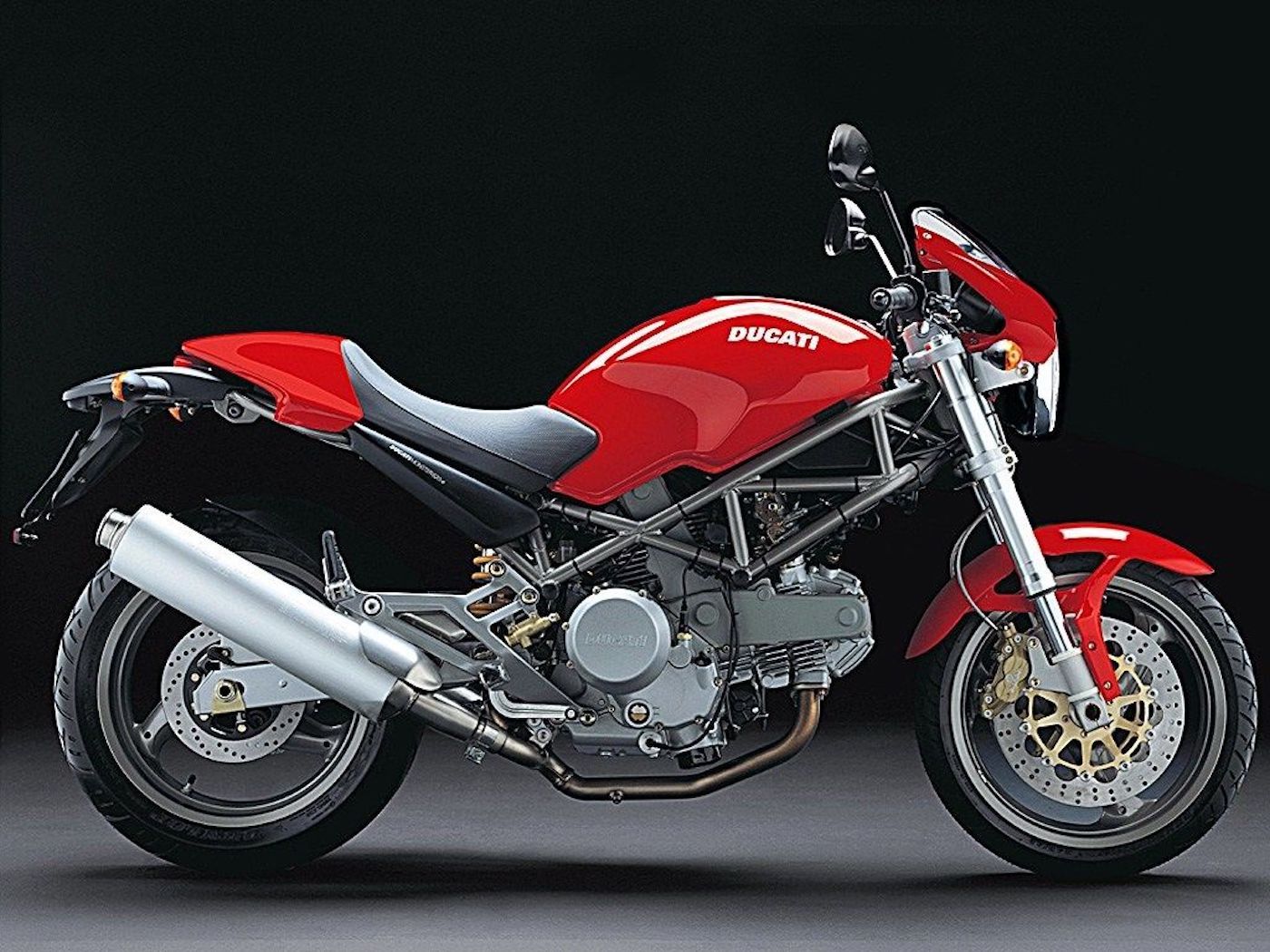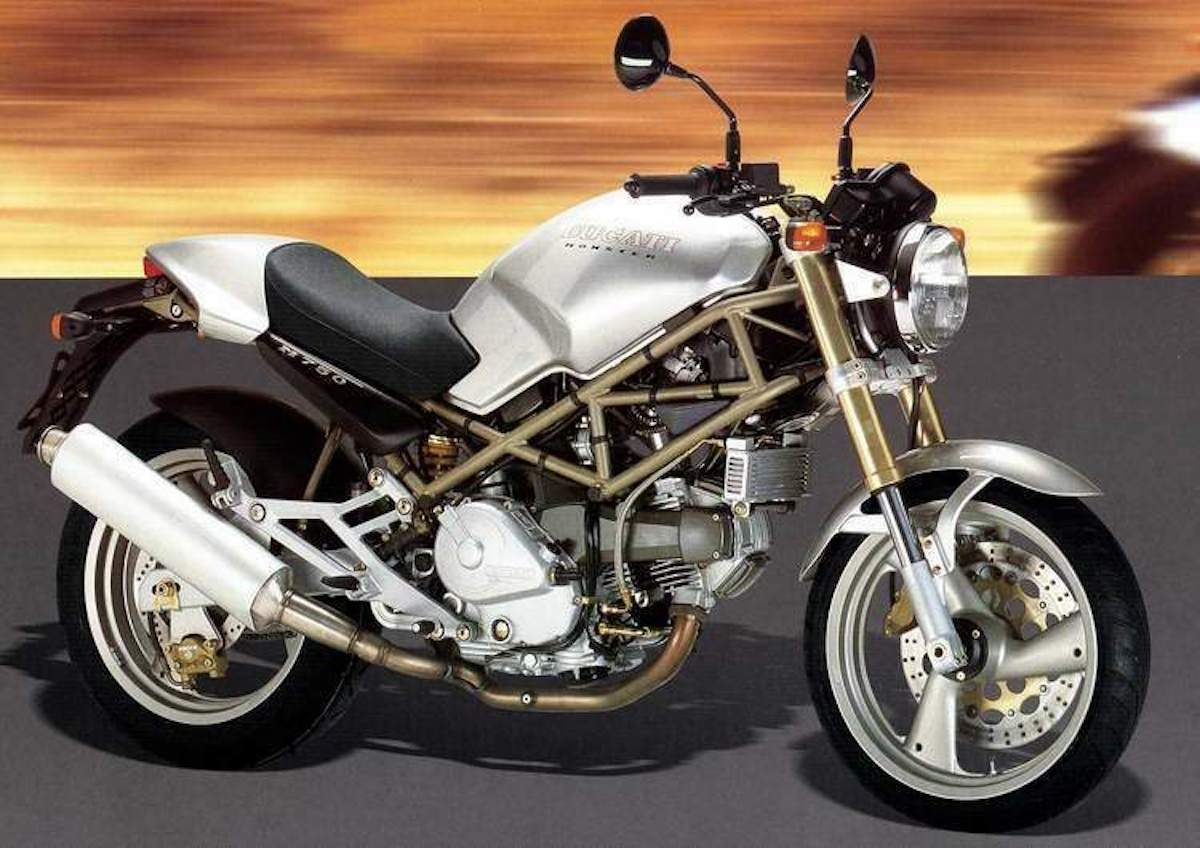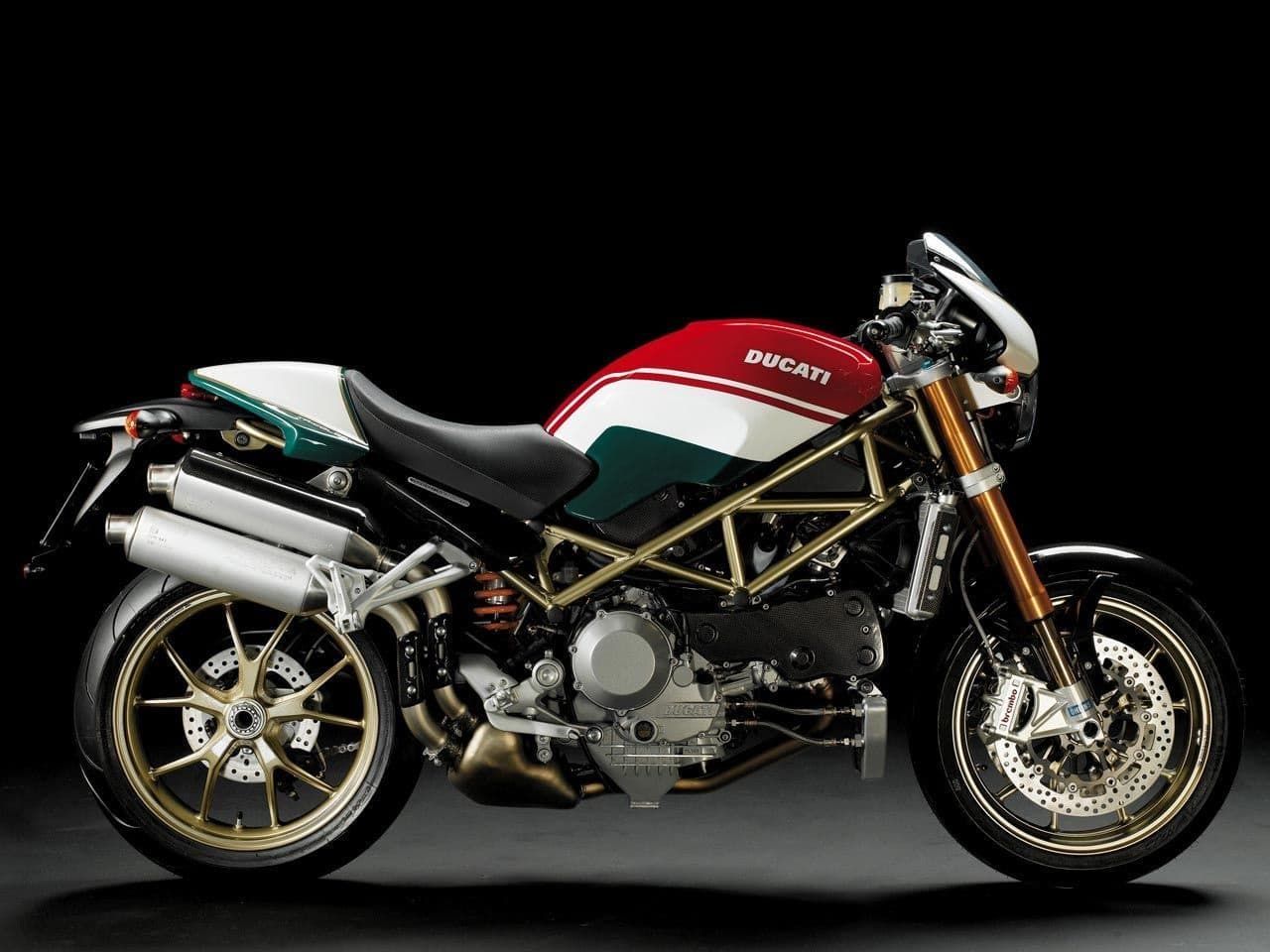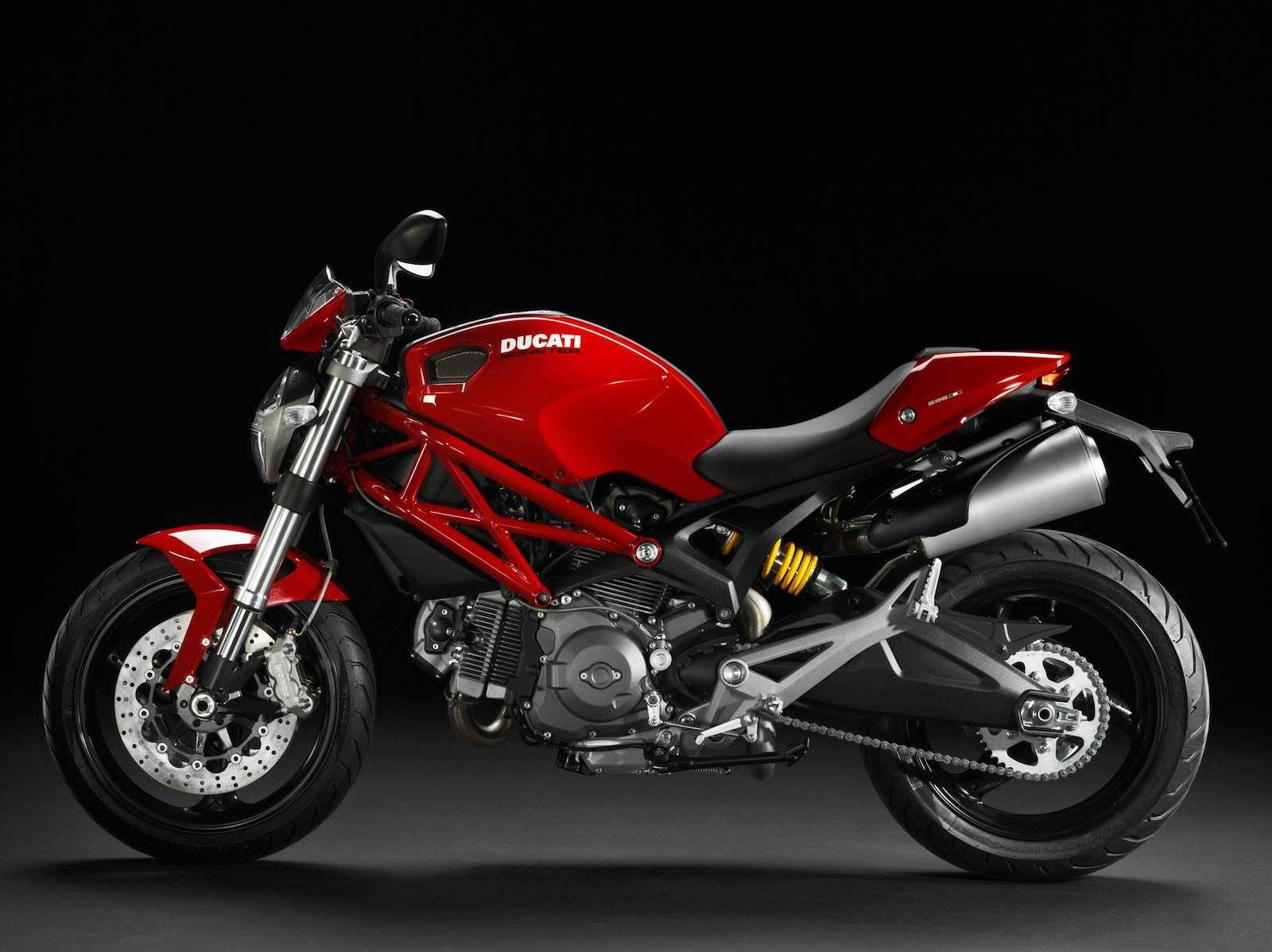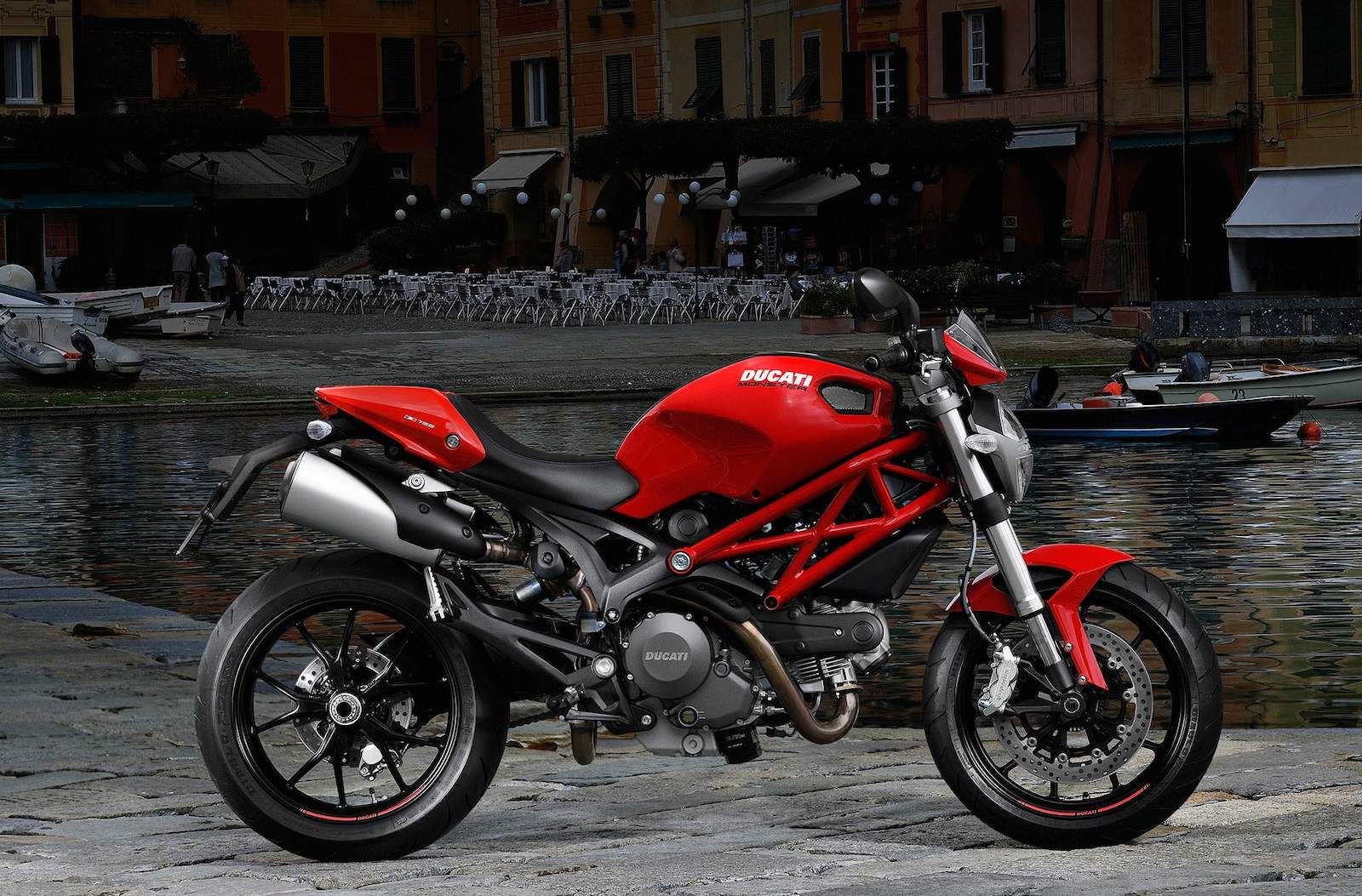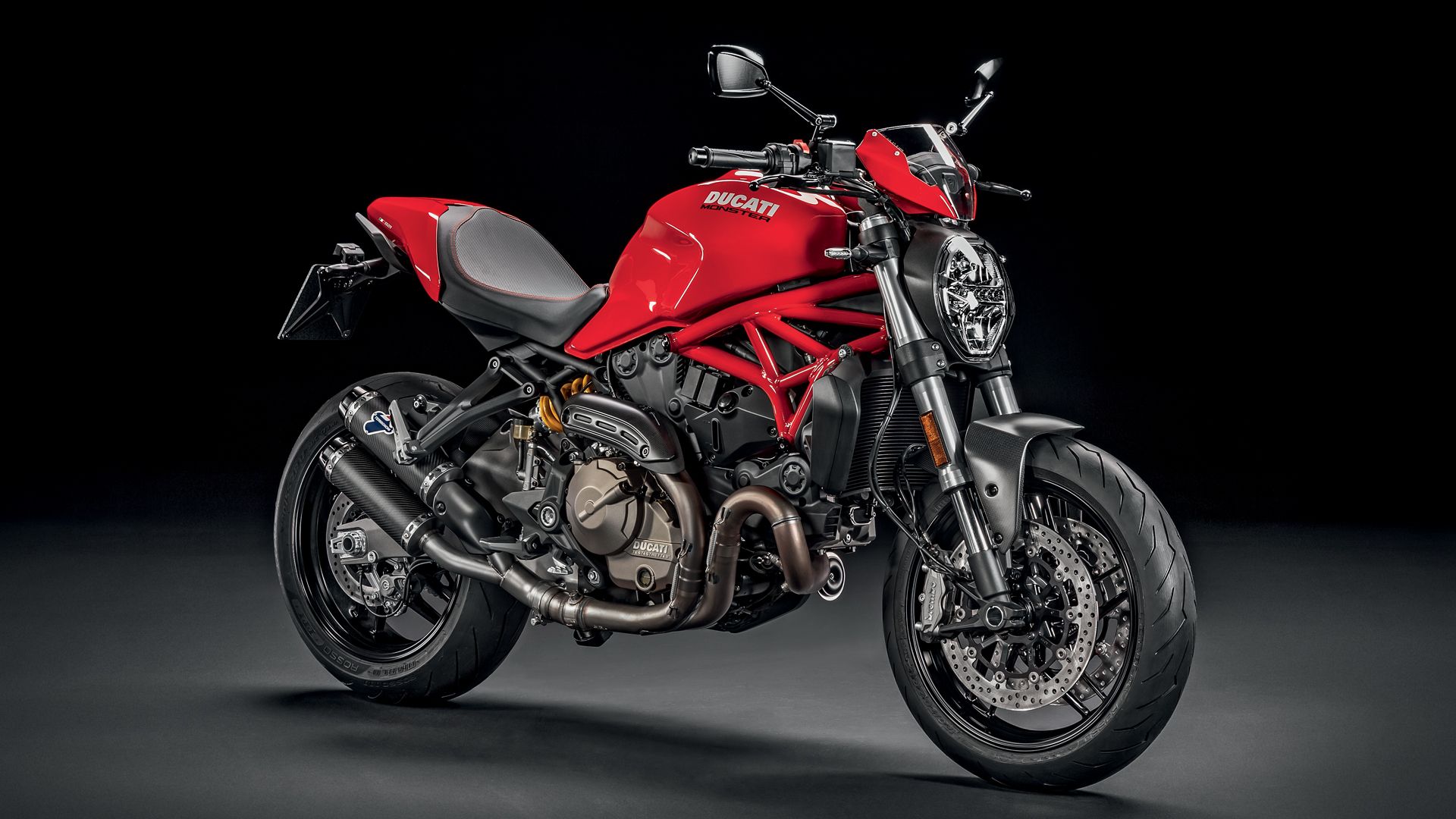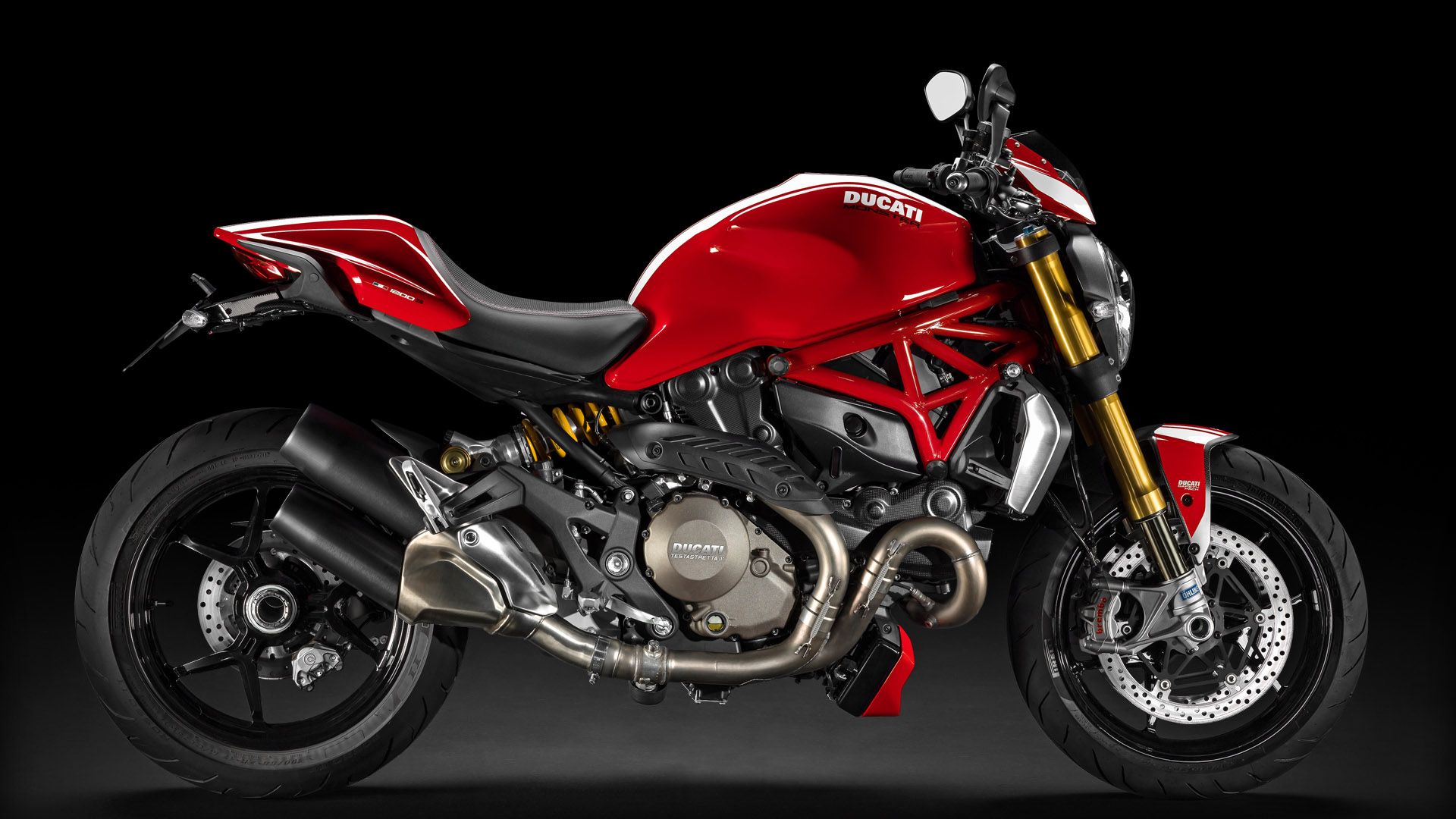Although possibly best known for its brilliant, faired sports bikes - 851, 888, 916, 1098, 1299, V4 Panigale - the real star bike in Ducati’s history has to be the Monster, launched in 1993. It was the success of this model - both then and now - that put Ducati on a financially sound footing and enabled it to develop all those other bikes. With a combination of accessibility, affordability, performance, handling and character, courtesy of a rumbling and powerful V-Twin engine, the Monster appealed to a huge percentage of the motorcycling world and continues to do so and, even though the recipe has changed significantly over the years, the fun-factor has remained the same.
10 Ducati Monster 900
1993 - 2005
The original Monster, designed by Miguel Galluzzi and using parts from several then-current Ducati models: 73 horsepower air-cooled V-Twin engine and swing arm from the 900SS, chassis frame from the 888 and forks from the 750SS. What the Monster took from no other bike was its stripped down, sparse form which was deemed to be so ugly by management that it was nicknamed il Monstro, or Monster. But it had great performance and handling, not to mention a lot of character, and it was relatively cheap (for a Ducati): people bought them in their thousands, generating much-needed cash-flow for the factory.
9 Ducati Monster M600/620ie/695
1994 - 2007
An obvious step after the concept had been proven, was to expand the range downwards and increase the appeal, which is exactly what Ducati did, putting the 53 horsepower engine from the 600SS into the frame. Costs were cut by using lower-spec cycle parts and there was a single front disc brake in place of the 900’s twin discs and, if the performance was a bit weak, the ultra-cheap price made it a popular choice for those moving up from a learner bike, who found it easy to ride, while still remaining stylish and with the air of exoticism that only a Ducati seems to possess. The 2002 620ie had fuel injection and the 695 arrived in 2006.
8 Ducati Monster 750/800
1996 - 2003
Even more fragmentation happened with another new model that sat directly between the 600 and 900 Monsters. The Monster 750 had the engine from the Ducati 750SS installed, which produced 62 horsepower and, if it was criticized for being a bit neither-here-nor-there in the range and subsequently one of the shortest-lived models, it addressed the relative lack of performance of the 600 without being as raw and fast as the 900cc models. Fuel injection and twin front discs from 1998 and now relatively rare and collectible.
7 Ducati Monster S4/S4R/S4RS
2001 - 2008
Ringing the changes again, the Monster at the turn of the millennium got the liquid-cooled, four valve engine from the 916, albeit in slightly detuned form, with 101 horsepower, as well as uprated suspension. In 2003, the 113 horsepower S4R appeared, complete with the single-sided swing arm from the 998 superbike and twin, stacked exhaust mufflers. In 2007, the S4RS arrived, with the 129 horsepower Testastretta engine, lightweight Marchesini wheels and Öhlins suspension. Very collectible today, the S4RS in particular commanding high prices.
6 Ducati Monster 696
2008 - 2014
2008 marked the 15th anniversary of the Monster, with many variations on the theme having been introduced over the years. But it was essentially still the same motorcycle it had been since the beginning and was due for a major update. Interestingly, Ducati chose to ring in the new with a smaller-engined model first and the Monster 696 arrived in 2008, followed by the 1100cc version a year later. If the engine was only a mild update, now with 68 horsepower over the old Monster 695, almost everything else was new: the chassis now had cast aluminum sections along with a new steel tube trellis main section, an under seat exhaust, a new styling look, LCD instrument panel and a rather odd flat headlight.
5 Ducati Monster 1100/1100S
2009 - 2014
The new flagship model followed the 696’s visual styling cues, with the addition of a single-sided swing arm. The other big difference, of course, was a significantly re-worked 1,078cc, air-cooled engine, producing 95 horsepower and 76 foot pounds of full-fat torque, creating arguably the best of the air-cooled Monsters, as well as the last of its type before liquid-cooling became the norm. The ’S’ model got Öhlins suspension, lots of carbon fiber and lightweight wheels, while there was also an Evo version from 2011, with 5 more horsepower and with electronics starting to make their presence felt, with ABS and traction control.
4 Ducati Monster 796/797
2010 - 2020
Ready to be confused? In 2010, the Monster 796 arrived, powered by an air-cooled 803cc engine, producing 87 horsepower. In terms of the chassis, it had the single-sided swing arm of the 1100 but lower-spec, non-adjustable suspension. The 796 and 696 were the last of the air-cooled Monsters and ran until 2014, being replaced by the liquid-cooled 821 Monster as the entry-level model. However, in 2017, Ducati announced the Monster 797, with a new 803cc, air-cooled engine, with 74 horsepower and that became the entry-level Monster. Is that all clear? Good - can you explain it to us, then?
3 Ducati Monster 821
2014 - 2020
2014 and the end of the air-cooled Monster line (if we ignore the arrival of the air-cooled 797 in 2017 - see above) and the arrival of liquid-cooled, four valve per cylinder engines across the line-up. The 821 replaced both the 696/796 to become the baby of the family, although 112 horsepower is nothing to sniff at. Even though it looked similar to the previous models, it was all-new, including the trellis frame and the styling, although it lost the single-sided swing arm. The ‘Dark’ was a lower-cost version and, in 2018 the 821 got a full-colour TFT dashboard. Even after all these years, the Monster was still a great bike to ride, still with lots of ability and character which the change to liquid-cooling had not diluted one bit.
2 Ducati Monster 1200
2014 - 2020
At the same time as the 821 came the all-new 1200 Monster, with a liquid-cooled 1198cc Testrastretta engine in place of the old air-cooled 1100cc engine. 133 horsepower sounds a lot, but many complained that the Monster had lost its bite and was getting a bit soft. An ’S’ version gave 143 horsepower and had better suspension, but the top of the line was the 1200 R in 2016, with 160 horsepower, Öhlins suspension and revised geometry and this helped give the Monster a new set of teeth to attack the latest crop of super naked sports bikes from the likes of KTM and Triumph. In 2017, the base model and the ’S’ got an upgrade to a 148 horsepower engine.
1 Ducati Monster
2021 - Today
The biggest change in the Monster’s 27-year history came in 2021. The biggest and visually important change was the loss of the tubular trellis frame, in favor of a new aluminum twin-spar design. Gone too, were the various different models: out went the 1200, 821 and 797 and in came a single model, called simply the Ducati Monster. The engine was the liquid-cooled 937cc unit as previously seen in the Supersport and Hypermotard, producing 111 horsepower and 69 foot pounds of torque. New styling, upgraded electronics, revised geometry and suspension and a new TFT dashboard. Many thought that Ducati was rather ignoring the Monster heritage and that this was a very small step forward and only time will tell if we are to see more Monster variants, hopefully with a bit more fire in its belly.

